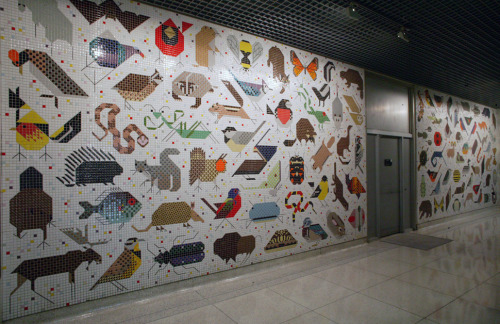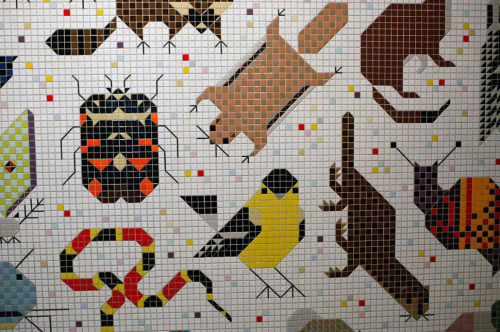Reverse Psychology That's Not In Psychology. Reverse Biology...?
Reverse psychology that's not in psychology. Reverse biology...?
How did you decide to do a project with RNA?
I was having a conversation with someone in our department about how useful and cheap next-gen sequencing is, and how I was considering spending out my grant on a project looking at immune gene expression in spiders. He told me flat out that I wasn’t capable of doing it, because I wouldn’t understand it enough to ever publish. So I used a kit to extract RNA, sent off the samples, read a few books in the meantime, learned to code, wrote the scripts for R and the supercomputer, then did it. I’m writing it up now, and have found some pretty cool stuff! I’m glad I learned it too, since it’s a good skill to have.
TL;DR: some asshole told me I couldn’t do it, so I decided to do it.
More Posts from Secretagentpeptidebond and Others
Also, while this is on my mind. In my master’s-level food toxicology class today we discussed various genetically modified crops and watched part of a documentary about them, and as someone with a food science degree I would like to be clear about the following:
The only health risk that has been shown to us throughout twenty plus years of having genetically modified crops as part of the food system is that there is a possibility of introducing proteins that could cause allergic reactions. New strains are required to be tested for this, of course, but that is a practical risk that needs to be closely monitored.
The objection to GM in general should be the patenting of genes and other legal matters; there are a number of crops that have been saved from blight and overall extinction via modification in the past two decades, and much like putting up inaccessibly expensive paywalls to scientific journals, patenting of genes within crops limits our ability within universities, small research companies, etc to make significant breakthroughs to further the scientific progress of humanity.
Furthermore. People think of organic crops as the environmentally-friendly option. If you believe this, please pay attention to what I’m about to say. Current regulations dictate that to have a crop classified as organic the land on which the crop is grown has to have been pesticide-free for a significant amount of time. There is no interim label available to farmers. So what do they do? Do they use no pesticides and take the losses from disease and insects for a decade, waiting for a time in which they are allowed to reclassify their crops in such a way that they can sell them for more money?
Of course they don’t. It isn’t practical. You can say what you like about how the system is structured; I’d personally like to see an interim classification come into play. But what farmers actually do, and states like Montana are feeling the full effects of this–they clear-cut forests and plant their organic crops on entirely new land.
You want to tell me that clear-cutting forests is environmentally friendly? It’s not. Hell, for all that people make a big deal about saving the environment by limiting how much paper they use, paper production is done in a more sustainable manner (because the paper farms replant their trees in a regular cycle so as to not deplete their sources; they don’t just go out and cut down random trees).
There are objections to be had in regards to GM crops on a legal basis. On a scientific one, there isn’t much. Call them frankenfoods all you want; look up what most commercially-sold produce truly looks like in the wild with no modification and you will learn very quickly that all foods have been modified in some way over the years through conventional breeding. We just think of that differently.
Biotechnology is not the enemy. Pseudoscience tells us that this is the case. Pseudoscience also tells us that we should seek out natural supplements instead of medicine, and, well… that’s a rant for another day, but suffice to say it’s an even more dubious proposition.
Don’t buy into it.





Space For All Species Mural
Charley Harper’s first ever mural ‘Space For All Species’ is located in the John Weld Peck Federal Building at 550 Main St. in downtown Cincinnati. Completed in 1964 the design is comprised of two 18×10½ ft panels that feature over 100 species of North American Animals. The tiles were made by Cambridge Tile Company in Cincinnati, OH. more…
We were just discussing in class today in the context of ubiquinated H2B. Neat!

Ubiquitin is a regulatory protein found in most tissues of many walled-celled organisms. Originally known as ubiquitous immunopoietic polypeptide, ubiquitin was discovered in 1975 and its mechanism identified by a team including Aaron Ciechanover, Avram Hershko, and Irwin Rose of the Fox Chase Cancer Center, for which they were awarded the Nobel Prize in Medicine in 2004. Ubiquitins act as traffic control agents within the cell, directing other proteins to various compartments within the cell including tagging proteins for destruction.
The word ubiquitin was formed in 1975 from the English adjective ubiquitous which dates only from 1837. Ubiquitous derives from the noun ubiquitary which dates from 1580s from the Latin preposition ubi meaning where and que meaning any, also, ever. Ubiquitary (meaning everywhere) originally referred to the Luthern doctrine that Christ is omnipresent.
Representation of ubiquitin protein, highlighting the secondary structure. α-helices are coloured in blue and β-strands in green. The sidechains of the 7 lysine residues are indicated by orange sticks. The two best-characterised attachment points for further ubiquitin molecules in polyubiquitin chain formation (lysines 48 & 63) are labelled.
Image of ubiquitin protein courtesy rogerdodd under a Creative Commons 3.0 license, used with permission.
Four evenings a year, the setting sun aligns perfectly with Manhattan’s street grid, creating a breathtaking wash of illumination along the cross streets, and tonight is one of them! In this video, Frederick P. Rose Hayden Planetarium Director Neil deGrasse Tyson, who first noted the phenomenon more than a decade ago and coined the term “Manhattanhenge,” explains the phenomenon.
-
 michi-hime liked this · 9 years ago
michi-hime liked this · 9 years ago -
 ghostdragonace reblogged this · 9 years ago
ghostdragonace reblogged this · 9 years ago -
 measuredwithcoffeespoons liked this · 9 years ago
measuredwithcoffeespoons liked this · 9 years ago -
 hearthburn reblogged this · 9 years ago
hearthburn reblogged this · 9 years ago -
 hearthburn liked this · 9 years ago
hearthburn liked this · 9 years ago -
 onionhighonionandrenown reblogged this · 9 years ago
onionhighonionandrenown reblogged this · 9 years ago -
 onionhighonionandrenown liked this · 9 years ago
onionhighonionandrenown liked this · 9 years ago -
 lhassinu reblogged this · 9 years ago
lhassinu reblogged this · 9 years ago -
 weaponized-mathematics liked this · 9 years ago
weaponized-mathematics liked this · 9 years ago -
 crusadeinjeans liked this · 9 years ago
crusadeinjeans liked this · 9 years ago -
 secretagentpeptidebond reblogged this · 9 years ago
secretagentpeptidebond reblogged this · 9 years ago -
 bokurawauta reblogged this · 9 years ago
bokurawauta reblogged this · 9 years ago -
 fictionprincess reblogged this · 9 years ago
fictionprincess reblogged this · 9 years ago -
 rhuanious liked this · 9 years ago
rhuanious liked this · 9 years ago -
 localspacefaggot liked this · 9 years ago
localspacefaggot liked this · 9 years ago -
 emergingnerd-deactivated liked this · 9 years ago
emergingnerd-deactivated liked this · 9 years ago -
 pigeon-feet liked this · 9 years ago
pigeon-feet liked this · 9 years ago -
 jezi-belle reblogged this · 9 years ago
jezi-belle reblogged this · 9 years ago -
 awoogov reblogged this · 9 years ago
awoogov reblogged this · 9 years ago -
 awoogov liked this · 9 years ago
awoogov liked this · 9 years ago -
 obsidiandragon reblogged this · 9 years ago
obsidiandragon reblogged this · 9 years ago -
 azymic liked this · 9 years ago
azymic liked this · 9 years ago -
 sadcthulu liked this · 9 years ago
sadcthulu liked this · 9 years ago -
 shitpostingspacecowboy reblogged this · 9 years ago
shitpostingspacecowboy reblogged this · 9 years ago -
 carpegaudium reblogged this · 9 years ago
carpegaudium reblogged this · 9 years ago -
 reallymadscientist reblogged this · 9 years ago
reallymadscientist reblogged this · 9 years ago -
 shitpostingspacecowboy reblogged this · 9 years ago
shitpostingspacecowboy reblogged this · 9 years ago -
 crybaby-cryptid liked this · 9 years ago
crybaby-cryptid liked this · 9 years ago -
 elliefriedrice liked this · 9 years ago
elliefriedrice liked this · 9 years ago -
 azmelly liked this · 9 years ago
azmelly liked this · 9 years ago -
 darquingdragon liked this · 9 years ago
darquingdragon liked this · 9 years ago -
 septembreadeux liked this · 9 years ago
septembreadeux liked this · 9 years ago -
 paleokayale reblogged this · 9 years ago
paleokayale reblogged this · 9 years ago -
 paleokayale liked this · 9 years ago
paleokayale liked this · 9 years ago -
 benzeneandcaffeine reblogged this · 9 years ago
benzeneandcaffeine reblogged this · 9 years ago -
 salixunit liked this · 9 years ago
salixunit liked this · 9 years ago -
 boina-the-snake liked this · 9 years ago
boina-the-snake liked this · 9 years ago -
 theboredbiologist liked this · 9 years ago
theboredbiologist liked this · 9 years ago -
 cresolphthalein reblogged this · 9 years ago
cresolphthalein reblogged this · 9 years ago -
 journeymanfool reblogged this · 9 years ago
journeymanfool reblogged this · 9 years ago










